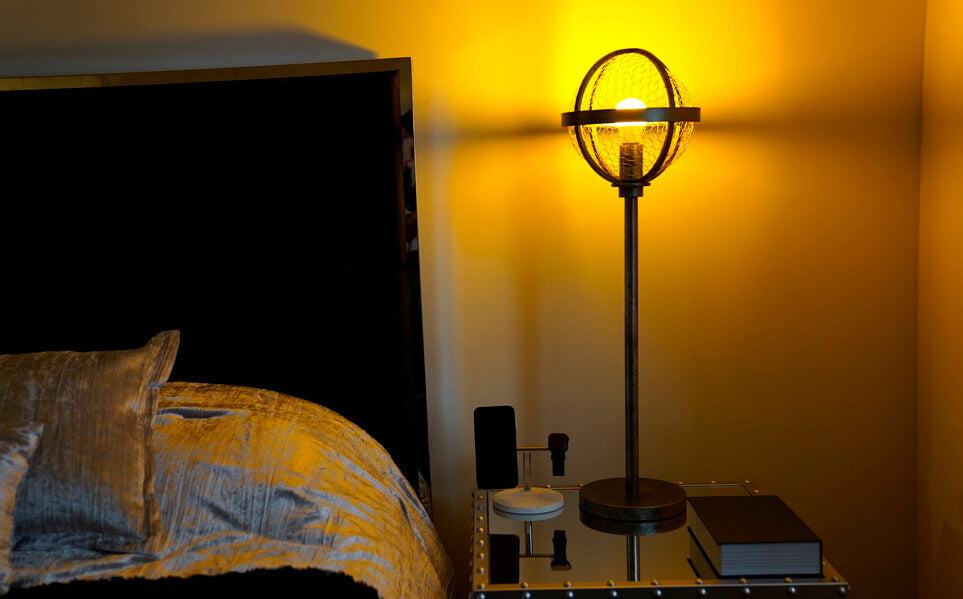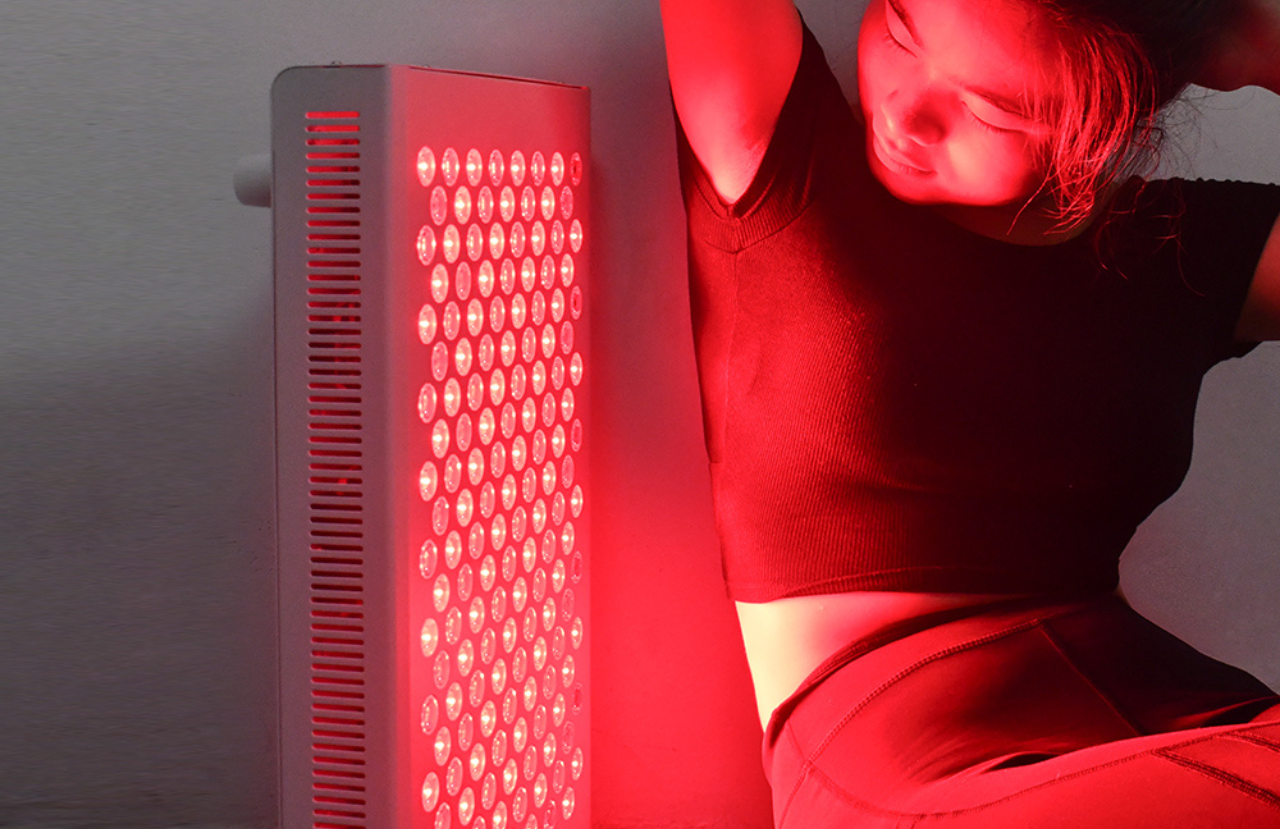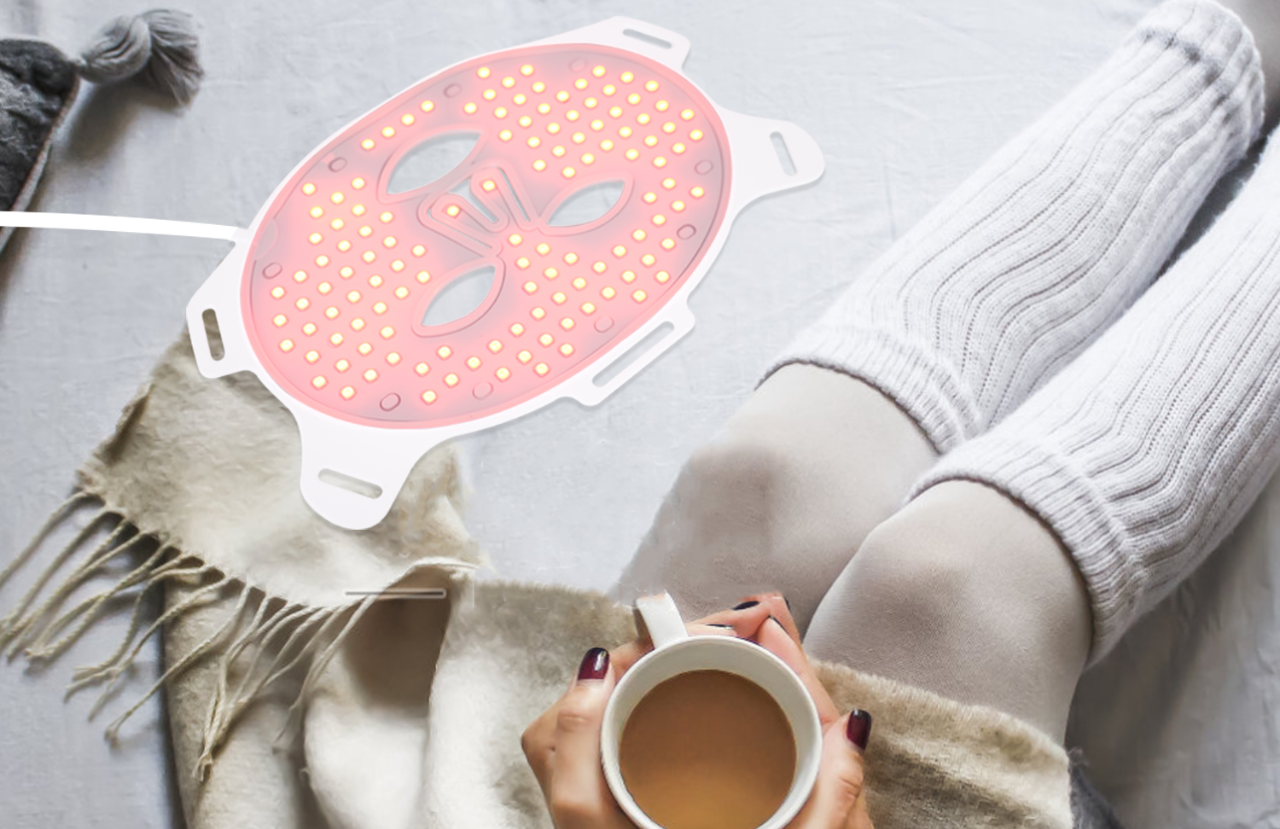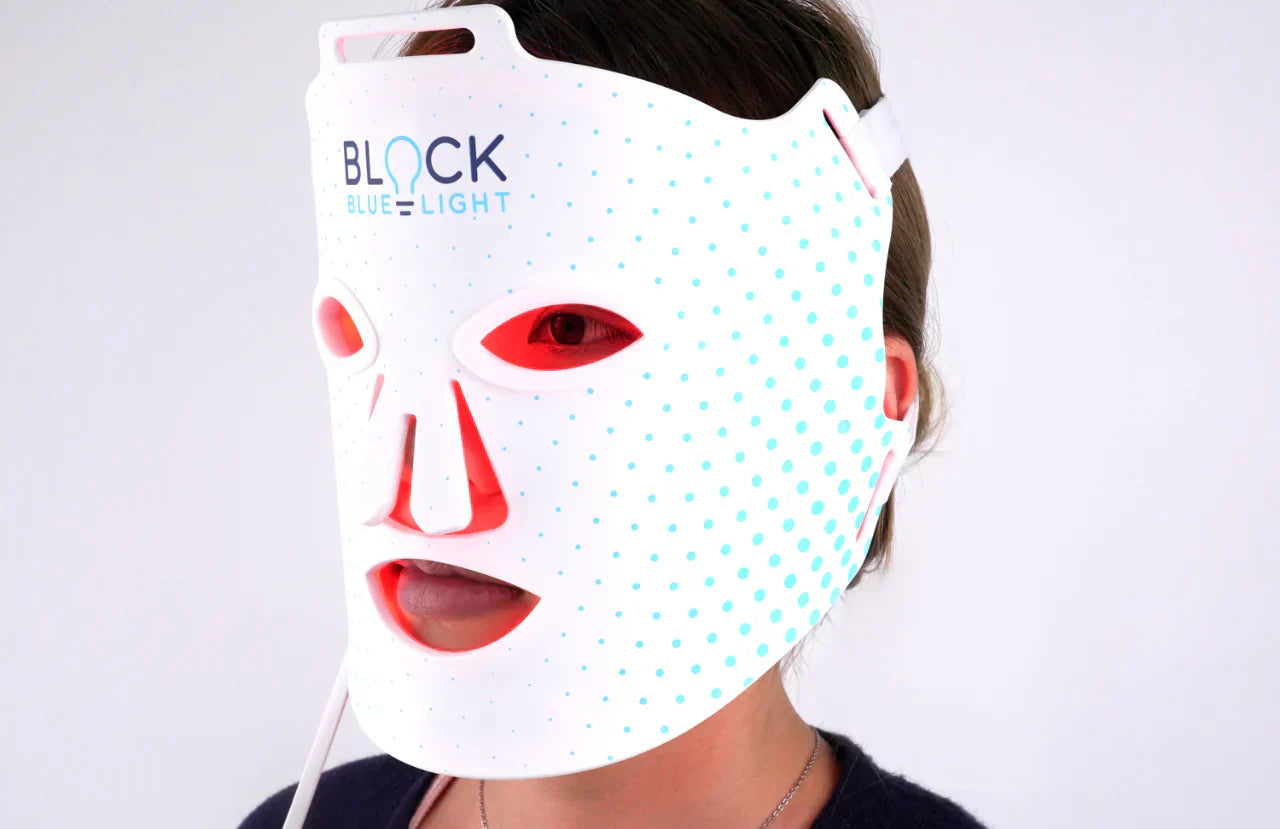When it comes to setting your bedroom up for a good night’s rest, it may seem to be all about the ‘mood’ of the room. Which is technically correct to a degree, but it also leaves out a massive part of sleep health - which is the correct lighting to biologically stimulate sleep.
If you have ever suffered from restless sleep, insomnia, or broken sleep. Then you’ll know just how important a good night’s sleep is. Ever made it through a full tiring day, only to be greeted by the ticking of your clock and the looming ceiling as you beg for sleep to arrive? Yep? Then this article is for you.
Clinical research shows the importance of the type of lights (and light wavelengths) that we expose ourselves to. The type of light you expose yourself to can affect your sleep pattern and make it harder to fall asleep, and stay asleep. And exposing yourself to the wrong type of lighting just two hours before sleep can have detrimental effects on your overall health.
Setting the mood is more than just aromatherapy, candles, and comfortable sheets. Creature comforts are great, but blue light blocking lightbulbs and lamps are simply way more important in terms of health and wellness.
In this article, we provide some of the best tips to help you pick the best lighting for your bedroom. Lighting that will have you nodding off into a deep, restorative, and rejuvenating sleep in no time.
How Do I Choose A Light For My Bedroom?

The human body has a natural rhythm, so you need to choose a light that works with your biology, as opposed to against it. Light bulbs that block blue light are best for your bedroom and house in general. Evaluate your needs in terms of lighting level, and then correlate this to the best blue light blocking lightbulb or lamp.
The body’s natural sleep and wake cycle are known as the circadian rhythm. Your circadian rhythm is based on the rotation of the earth and its rhythm around the sun. And it lets you know when to get up and become active, and when to relax and prepare for the night and good sleep.
Blue light wavelengths play a pivotal role in the circadian rhythm. During the day, you receive a lot of natural blue light wavelengths directly from the sun. And these blue light wavelengths send messages to your hormonal system which ensure that your body is alert, awake, and productive. Fun fact; this is also why going outside into the sun is recommended as a treatment for jet lag. It helps to naturally reset your circadian rhythm through exposure to natural blue light wavelengths.
Your body uses the information from light wavelengths to release and decrease specific hormones. When the sun goes down, the body begins to increase its melatonin levels which signal to the body that it’s time to begin to wind down, relax, and prepare for sleep. However, this natural cycle can be impacted by LED lights that emit artificial blue light. Causing a range of issues from insomnia, and mental health imbalances to more serious complications.
Specialised lightbulbs such as the Sweet Dreams Sleep Lights with amber light, and the Twilight Red Light Bulb offer protection and ambiance that make your bedroom the perfect environment for a good night’s sleep.

There is a range of light wavelengths that you are exposed to, and these appear visually as different colors. The color spectrum of light wavelengths goes from red to violet; red, orange, yellow, green, blue, indigo, and violet (ROYGBIV).1 On the right side of the spectrum is the more intense light including blue light wavelengths. Blue light is emitted from tablets, smartphones, computers, and most LED light bulbs.
Pure red and amber light bulbs are best as they help to create a relaxed and ambient environment that is conducive to sleep. Warm colors like red and amber are similar in color temperature to the light emitted from the sun when it is setting. It helps to recreate the trigger for your biological response of a relaxed state that encourages better sleep.
The Best Light Bulbs For Your Bedroom
The best light bulbs will block blue light so that your melatonin level can increase when the sunsets. And choosing a red light bulb or amber light bulb helps to recreate the effect of the setting sun. Red and amber light bulbs are the best light bulbs for your bedroom to encourage healthy sleep and biological function.
Be very careful with cheap colored light bulbs, while these appear to look like pure orange or red light they are not. When measuring these coloured light bulbs with a laboratory grade spectrometer they still have significant levels of blue light being emitted form them. The cheap coloured bulbs are generally just using a coloured shell to make normal light appear a different color such as red or orange. There’s no testing or specific designing gone into these bulbs to remove 100% the harmful blue and green spectrum of light.
All of BlockBlueLight's lighting products are 100% blue light free, do not flicker, and have a low electromagnetic frequency. The red light bulbs offer higher protection than the amber light bulbs, but also less visibility. Red light bulbs protect by fully blocking blue and green light wavelengths which are both known to cause sleep disturbances and hormone imbalances.
The Best Lighting For Bedroom
Here are some tips for getting the best lighting in your bedroom and creating the most comfortable and chic interior design in one the best rooms in your home.
-
Create Focal Points
Choose lighting focal points. Such as an overhead lighting source fitted with a blue light blocking amber light bulb. And don’t create too many light sources that will be used at the same time because overhead light will class with other LED lighting in your bedroom and it can be taxing on the eyes. Picking a suitable lampshade helps you to direct the light and create the desired focal point for your overhead light.
-
Ultilize Lamps And Accent Lighting
Compliment your overhead lighting source with a variety of lamps. You still want to create a focal point with your lamps, and you don’t need to use them all at the same time. Work out if a table lamp, desk lamp, bedside lamp, or floor lamp works best in your room. Or maybe you want a few different types of lamps and bedroom lighting sources to cover the different uses of your bedroom.
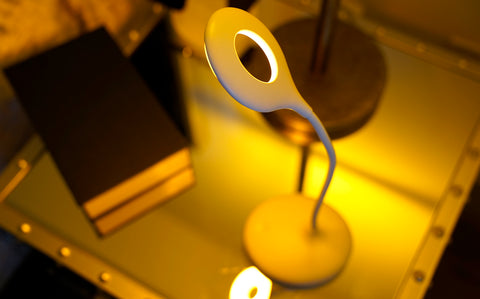
Just remember that any LED lamp should be fitted with a blue light blocking light bulb to protect you from harmful blue light wavelengths. You can either choose your own lamp and fit it with an amber light bulb, or red light bulb. Or alternatively you can choose a blue light blocking lamp stocked by BlockBlueLight that already comes complete with an integrated blue light blocking light.
-
Match Your Color Temperature And Color Scheme
If your bedroom color scheme is dominated by a dark color or vibrant bright color, then you may want to opt for a blue light blocking amber bulb as red light bulbs offer higher protection, but less visibility. If your color scheme is a lighter color or neutral color then you can choose an amber or red light bulb without an issue of visibility.
-
Use An Accent Color
The color scheme of your bedroom walls are important if you really want to create ambient light in your bedroom. If you like vibrant colours but still prefer to use red light blue blocking bulbs then opt for an accent color on an accent wall. This allows you to keep the rest of the room neutral to increase visibility, whilst still maintaining maximum blue light and green light protection.
The wall behind the headboard in your master bedroom is perfect for a trendy and bold accent color. Picking the right color on the color wheel that compliments your light source makes a huge difference to the atmosphere of the room. Think about the shade and hue, and test the paint color using a sample before committing to the color scheme.
-
Ensure Every Light Bulb Fully Protects You From Blue Light (And Green Light If Possible)
You want to steer away from cool colors, artificial LED lights without blocking blue light protection, and bright white light in your bedroom. This prevents unwanted health complications, insomnia, broken sleep, and disturbed sleep. Your bedroom lighting should encourage a warm, cozy, and snug atmosphere that allows the body to fall into a relaxation and restoration response.

Is Cool White Light Bad For You?
Cool white LED light’s are harmful to the eyes and have even been known to be harmful to the skin. White light is harsher and closer to the radiation emitted from the sun on the wavelength spectrum than other light bulb colors. The most common white light sources are LED lights that also emit blue light wavelengths. And over-exposure to blue light wavelengths can cause eye strain, discomfort, blurriness, and in some cases dryness and pain.
Cool white light is harsher on the photoreceptors in the eye. And the alertness that comes from being exposed to blue light hinders the blinking reflex - which in turn allows the eyes to dry out. Exposure to red and amber light doesn't stimulate the photoreceptors nearly as much. So the eyes can relax, and you blink more which allows the eyes to be better lubricated. You can protect yourself from blue light emissions from your phone, tablet, or computer screen with blue light blocking glasses for night, or for the daytime with computer glasses.
Cool white lights are LED lights that emit a large amount of artificial blue light, and studies show the wide range of harmful effects that blue light can have on mental, emotional, and physical health.
The risks associated with artificial blue light exposure include:
- Possible skin damage
- Damage to the photoreceptors of the eye1
- Eye fatigue and strain
- Interruption of the circadian rhythm
- Difficulty falling asleep
- Difficulty staying asleep
- Restlessness
To minimise your risk of disturbed sleep, hormone imbalance, and other health issues it is best to opt for blue light blocking amber and red light bulbs or lamps for your home.
One of the best solutions for mild insomnia and any sleep-related problem is to evaluate your level of blue light exposure and proceed accordingly. White light that emits blue light wavelengths promotes productivity and alertness. As it imitates daylight hours, whilst red and amber lights emulate dusk and promote the release of melatonin and preparation for sleep.
Sleep experts recommend eliminating all blue light exposure at least 2 hours before bed.2 This allows the body to adapt and function properly in line with the circadian rhythm. When evaluating the lighting of your bedroom, your best options are amber and red light bulbs.
Conclusion
The best way to choose your lighting is by evaluating your bedroom uses, your desired level of protection from harmful blue light rays, and your bedroom color scheme. This allows you to choose if an amber or red light bulb works better for your needs, and helps you to ensure that every night is a snug and cozy night of proper rest in your new den.
Sources:
- https://www.ncbi.nlm.nih.gov/pmc/articles/PMC6751071/
- https://www.health.harvard.edu/staying-healthy/blue-light-has-a-dark-side

